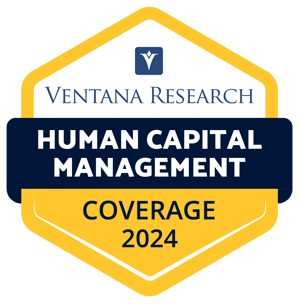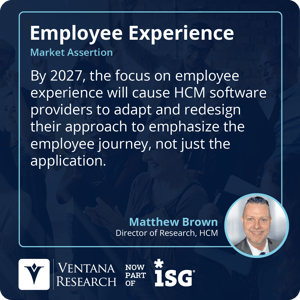Maximizing Technology to Engage Generations in the Workplace
By the year 2025, the U.S. Department of Labor estimates that the generational makeup of our workforce will be:
- 11.4% Gen Z.
- 43.9% Millennials.
- 28.8% Gen X.
- 15.5% Boomers.
- 0.4% Traditionalists.
By the late 2020s, Gen Alpha will move into the workforce, introducing a new dynamic. With  the potential for up to five or six generations in the workplace, enterprises are often challenged to understand how to bridge the generation gap and create a cohesive workforce. The answer can be found within your technology stack.
the potential for up to five or six generations in the workplace, enterprises are often challenged to understand how to bridge the generation gap and create a cohesive workforce. The answer can be found within your technology stack.
Technology has shaped and influenced each generation in different ways. How do the four largest generational segments view technology?
- Boomers tend to be cautious and hesitant with technology-related changes. They prefer the tried-and-tested methods they learned.
- Gen X sees change as a new opportunity for growth, and is often open to technology-related changes but may require some light convincing.
- Millennials welcome change and see it as a key function of their success in business and life. They have a high preference for maximizing technology and approaching work with a collaborative mindset.
- Gen Z was born with expectations of change. They have experienced substantial advances in technology and quickly adapt to new automation.
While these generalized characteristics will not apply 100% to every member of a broad generational grouping, grasping these general psychographic themes can help organizational leaders understand potential friction points that may emerge in a multi-generational workplace if left unaddressed.
The unprecedented pace of technological change over the past 30 years, coupled with the consumerization of workplace technology, has opened the door for more holistic conversations in the workplace relative to employee experiences and expectations. Workers across generations increasingly bring a common expectation that workplace technologies should mirror the sleek, intuitive and meaningful experiences they enjoy in their personal lives with consumer apps and platforms.
Leaders are also battling a growing undercurrent of fear and uncertainty as workers speculate about the impact of artificial intelligence and other emerging technologies on jobs, job security and incomes. More worrisome is the challenge of growing employee frustration, distress and even burnout exacerbated by technologies designed primarily for productivity gains rather than for nurturing human potential and sustainable employee well-being. Taken together, these dynamics could represent a recipe for strained relationships, miscommunication and disengagement across generations.
When the fundamental human needs of workers are compressed into a one-dimensional technology solution or strategy, challenges ripple through the workforce. A dizzying array of technologies for basic communication and collaboration–Slack, Google Chat, Skype, Zoom, Google Meet, Microsoft Teams, Chatter and Yammer–can create workplace communication chaos when there is no clarity or governance surrounding which tool to use for which core business activities or employee needs. The term "technology disengagement syndrome" captures the emotional state when employees interact with technologies that are not intuitive, are overly complex, disjointed and siloed or frequently fail to help them efficiently accomplish key tasks. Workers understandably become highly resistant or antagonistic to embracing additional workplace technologies. Without realizing it, they devise manual workarounds and inefficient stop-gap practices as coping mechanisms, causing latent pain points and undesired cultural behaviors across generations.
HR technologies occupy a unique position in the digital workplace, making it critical to address these challenges. Technologies like employee recognition platforms, communications tools, payroll systems, learning management systems, performance management software and self-service HR portals engage all workers to participate in the workplace community. However, as with all workplace technologies, organizational leaders must carefully implement and evolve HR technologies in tight alignment to support multi-generational worker needs rather than solely optimize administrative efficiencies or check boxes on feature checklists.
The key is to establish and continually nurture an underlying foundation of trust with employees across generations regarding the worker experience as enabled by technology. This involves holistic thinking–meeting employees where they are, listening to them, empathizing with them, inviting them to share feedback and suggestions and then co-creating technology experiences by embracing their input. When an employee has a frictionless, positive experience with any technology, trust deepens, and they will demonstrate more willingness to explore additional workplace technologies with an open, growth mindset. Alternately, when human experience design falls short, or employees have largely unpleasant experiences driven by technologies not optimized for their needs, they quickly lose trust and resist adopting other solutions regardless of potential benefits.
Consider how few employees actively use every platform across an enterprise's business technology ecosystem. Today’s organizations have accumulated a vast array of specialized systems over the years as needed for each business function–such as customer relationship management and sales tools, marketing automation platforms, supply chain management solutions and proprietary data analytics dashboards. While many prove invaluable, almost none of these fragmented systems directly touch daily workflows or activities for the broader employee population. This reality often manifests in largely siloed experiences relative to adoption and sustained engagement with technologies outside an employee's domain expertise or discipline.
HR systems inherently cut across disciplines, offering touchpoints for the workforce overall. Every employee views payroll details via HR platforms. Every worker completes training via learning management system courses. Every employee accesses critical information via the HR portal or intranet, requests time off through self-service tools and so on. Yet, too often, organizations fail to realize the full potential of these far-reaching HR technology touchpoints, leaving tremendous value on the table through a lack of inspiration and innovation.
Thoughtfully evolved HR technologies represent one of the most powerful organizational tools for addressing generational expectations that emerge in the workplace. Many integral connections tying employees directly to cultural DNA–fostering trust, communicating with transparency, promoting work-life balance, ensuring fairness and inclusion and enabling continuous listening and learning–now manifest through technology. Applications spanning flexible work arrangements give employees greater autonomy over how, when and where work gets done based on life stage needs. Continuous learning pathways empower employees to develop critical skills on demand. Rich feedback mechanisms provide an equitable voice to share ideas, concerns and suggestions. AI-powered decision intelligence helps leaders reduce bias in critical talent decisions.
connections tying employees directly to cultural DNA–fostering trust, communicating with transparency, promoting work-life balance, ensuring fairness and inclusion and enabling continuous listening and learning–now manifest through technology. Applications spanning flexible work arrangements give employees greater autonomy over how, when and where work gets done based on life stage needs. Continuous learning pathways empower employees to develop critical skills on demand. Rich feedback mechanisms provide an equitable voice to share ideas, concerns and suggestions. AI-powered decision intelligence helps leaders reduce bias in critical talent decisions.
The technology foundations enabling these critical cultural pillars fall firmly within the HR domain. Further, the potential volume of interactions between workers and HR technologies can generate a goldmine of insights leaders can analyze to guide an organization's path toward nurturing a truly thriving workplace culture embracing multi-generational diversity as a competitive strength. By 2027, the focus on employee experience will cause human capital management software providers to adapt and redesign software to emphasize the worker journey, not just the application.
In an increasingly technology-driven business climate where most workers spend the majority of their waking hours connecting through digital screens and platforms, a thoughtfully human-centered HR technology strategy represents the most logical starting point for any organization aiming to captivate talent by designing employee experiences that engage and empower across generations.
Regards,
Matthew Brown

Matthew Brown
Director of Research, Human Capital Management
Matthew leads the expertise in HCM software and guides HR and business leaders with over two decades of experience. His research covers the full range of HCM processes and software including employee experience, learning management, payroll management, talent management, total compensation management and workforce management.








